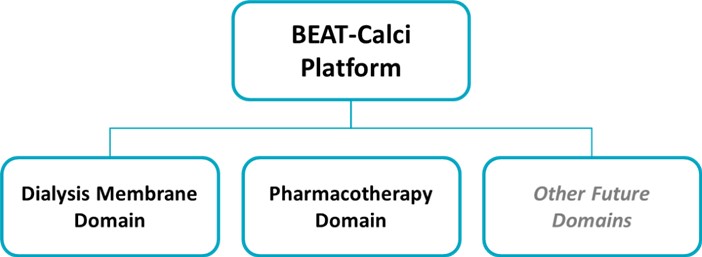Calciphylaxis is a rare disease that is mainly seen in patients with Kidney Failure, who are receiving dialysis. In calciphylaxis, calcium builds up in the small blood vessels of fat and skin tissue. This can lead to blocked blood vessels, painful skin ulcers and sometimes complications including serious infections.
There are many ways that doctors may approach the clinical care of people with calciphylaxis. These include pharmaceutical (or ‘drug’) treatment, changing dialysis frequency or type, wound care, surgery and so on. These represent different types of treatment, also referred to as treatment ‘domains’. At present, none of these approaches to manage calciphylaxis are supported by high-quality evidence.
The Better Evidence And Translation for Calciphylaxis (BEAT-Calci) trial was developed in collaboration with international calciphylaxis experts to generate much needed high-quality evidence. BEAT-Calci aims to find the best treatment, or combination of treatments, for calciphylaxis and is using a design that can answer many treatment-related questions, within one trial. The BEAT-Calci trial is a ‘platform’, which means that the research will be ongoing and participants will continue to be recruited until all possible treatments have been tested or the best treatment has been found. It is also ‘adaptive’ which means it is flexible. New treatment types or individual treatments can be added, and treatments that are not working as well as others can be removed.
For more information about the sites involved in this study, please visit our Participating Sites page or get in touch via the Contact Us page.
BEAT-Calci will start by testing two types of treatments (or ‘domains’ of care), as below.
Participants can choose to be part of one domain, or both domains.

In BEAT-Calci, the impact of treatment on participant outcomes will be evaluated in several ways, including wound measurement, a pain survey and a quality-of-life questionnaire.
